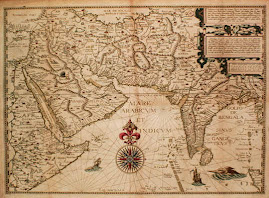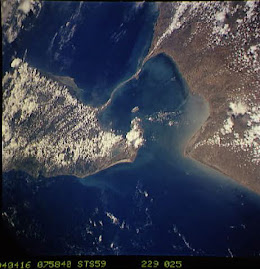
Here r the some of the interesting archeological findings about INDIA
1. Evidence of Ancient Sea Trade Between ROME and INDIA
Excavation of an ancient seaport on Egypt's Red Sea found spices, gems and other exotic cargo showing, archaeologists, that say sea trade linking the Roman Empire and India 2,000 years ago .
2. India was the First Source of DIAMONDS
"Diamond" comes from the Greek "adamao" meaning, "I tame" or "I subdue," The adjective "adamas" was used to describe the hardest substance known, and eventually became synonymous with diamond. Knowledge of diamond starts in India, where it was first mined. The word most generally used for diamond in Sanskrit is "vajra," "thunderbolt," and "Indrayudha," "Indra's weapon."
The earliest known reference to diamond is a Sanskrit manuscript by a minister in a northern Indian dynasty. The work is dated from 320-296 BC.
3. A 7,000-year-old TEMPLE in MALLESWARAM
The ancient Nandeeshwara temple at Malleswaram 17th cross was discovered only three years ago, but it has stood for 7,000 years on that spot. Being buried over the years hasn't diminished its aura at all.
4 . Satellite Photos of the BRIDGE Between RAMESVARAM and SRI LANKA
Space images taken by NASA (from the NASA Digital Image Collection) reveal the mysterious ancient bridge in the Palk Strait between India and Sri Lanka.
The unique curvature of the bridge and composition by age reveals that it is man made. The legends as well as Archeological studies reveal that the first signs of human inhabitants in Sri Lanka date back to a primitive age, about 17,50,000 years ago and the bridge's age is also almost equivalent.
This information is a crucial aspect for an insight into the mysterious legend called ramayana, which was supposed to have taken place in Treta Yuga (more than 17,00,000 years ago).
In this epic, there is a mentioning about a bridge, which was built between Rameshwaram (India) and the Sri Lankan coast under the supervision of a dynamic and invincible figure called RAMA who is supposed to be the incarnation of the Supreme Being.
5. Stealth Bomber from Shastra
A glass-like material based on technology found in an ancient Sanskrit text that could ultimately be used in a stealth bomber (the material cannot be detected by radar) has been developed by a research scholar of Benaras Hindu University.
This unique material cannot be traced by radar and so a planewith it .This interesting factor u can see in Vaimanika Shastra, wrote by Bharadwaj. The shastra has interesting information on vimanas (airplanes), different types of metals and alloys, a spectrometer and even flying gear.
The shastra also outlines the metallurgical method to prepare an alloy very light and strong which could withstand high pressure
Aryan concept:::A fake history created by Eurocentrism and Colonialism Indian History Revisited (please read this)
Most people in India today have been led to believe that the Vedic Aryans were the first invaders of the country. They have been the image of the Aryan hordes pouring down the passes of Afghanistan on horseback, destroying the indigenous urban Harappan culture that was Dravidian in nature. Even Pandit Jawaharlal Nehru subscribed to this view and it remains in textbooks in India today.
That there was no record of such an event in ancient Indian records, north or south, was ignored. That this theory never managed to prove itself was disregarded.
Recently, however, the Aryan invasion idea is becoming rejected worldwide in light of new archaeological evidence that contradicts it. However, Indian secular and Leftist thinkers like to denigrate any questioning of the invasion theory as Hindu fundamentalist propaganda.
A recent academic paper argues that there is an indigenous development of civilisation in India going back to at least 6000 BCE (Mehrgarh). It proposes that the great Harappan or Indus Valley urban culture (2600-1900 BCE), centred on the Saraswati river of Vedic fame, had much in common with Vedic literary accounts. It states that the Harappan culture came to an end not because of outside invaders but owing to environmental changes, most important of which was the drying up of the Saraswati.
It argues further that the movement of populations away from the Saraswati to the Ganges, after the Saraswati dried up (c 1900 BCE), was reflected in the literature with Vedic Saraswati based literature giving way to Puranic texts extolling the Ganga. Perhaps more shockingly, the paper states that the Aryan invasion theory reflects colonialism and Eurocentrism and is quite out of date







2 comments:
this z really an amazing article ..
any indian will be proud to read this..
i really thank,congratulate the authour for his work to get this information
All Indian must get a view over this site to know ho we really can rule the World: http://www.mifindia.co.in
Post a Comment